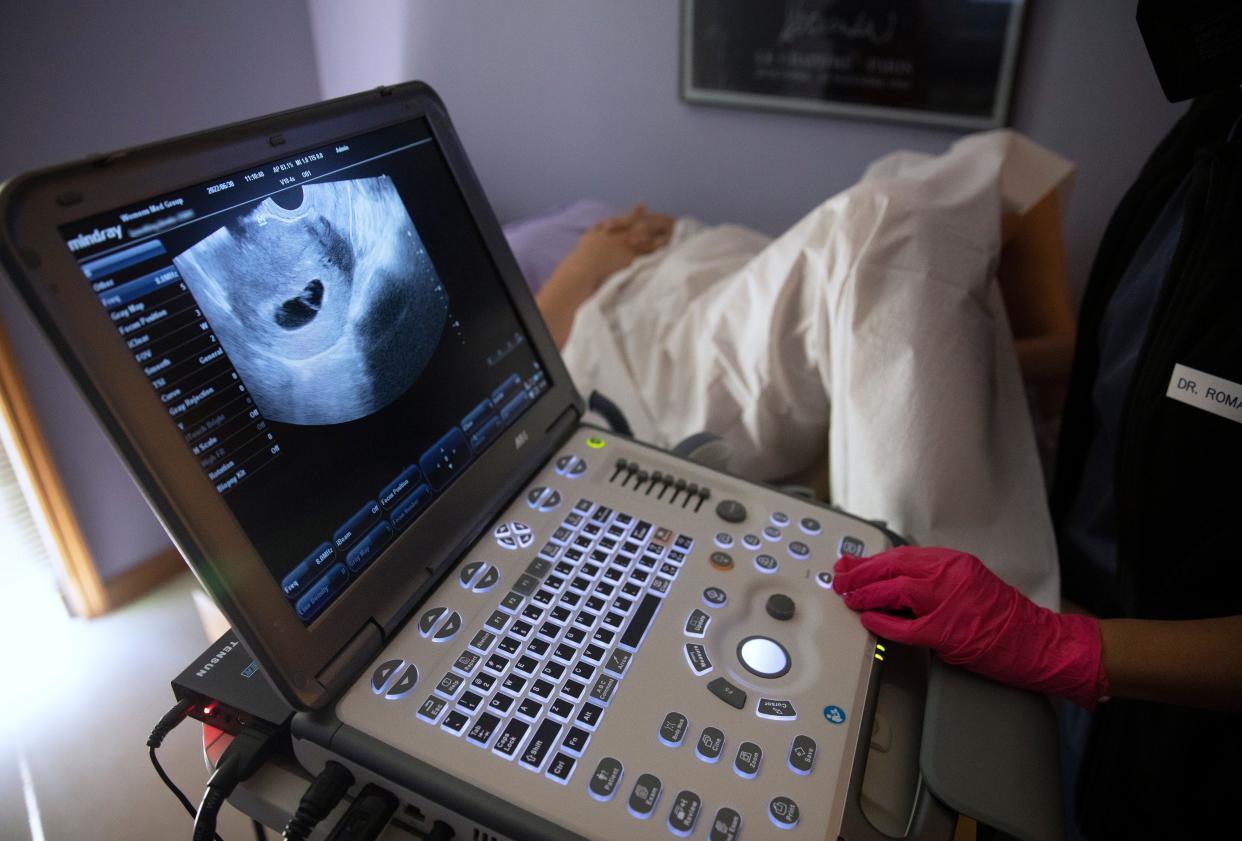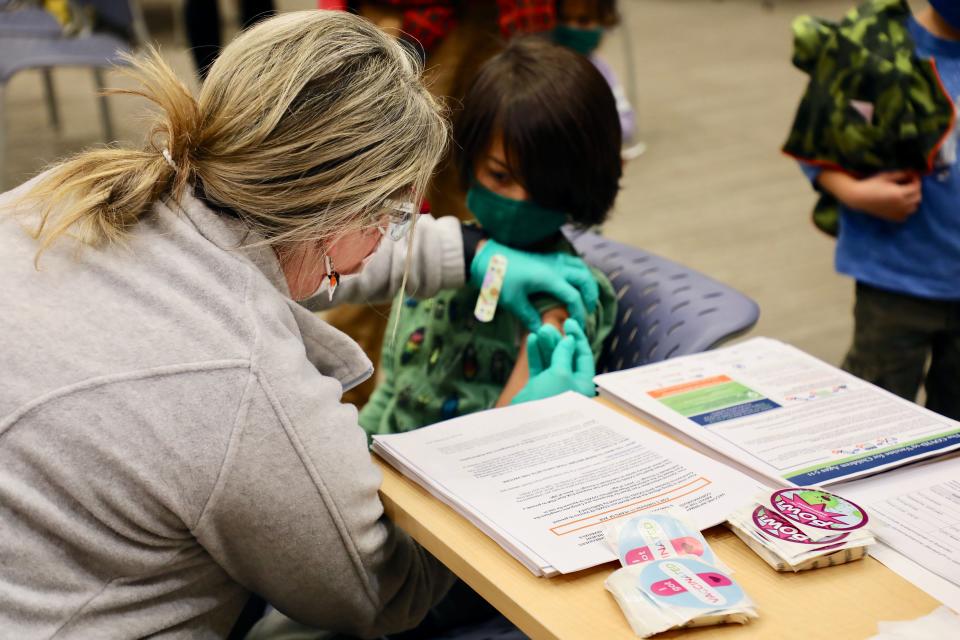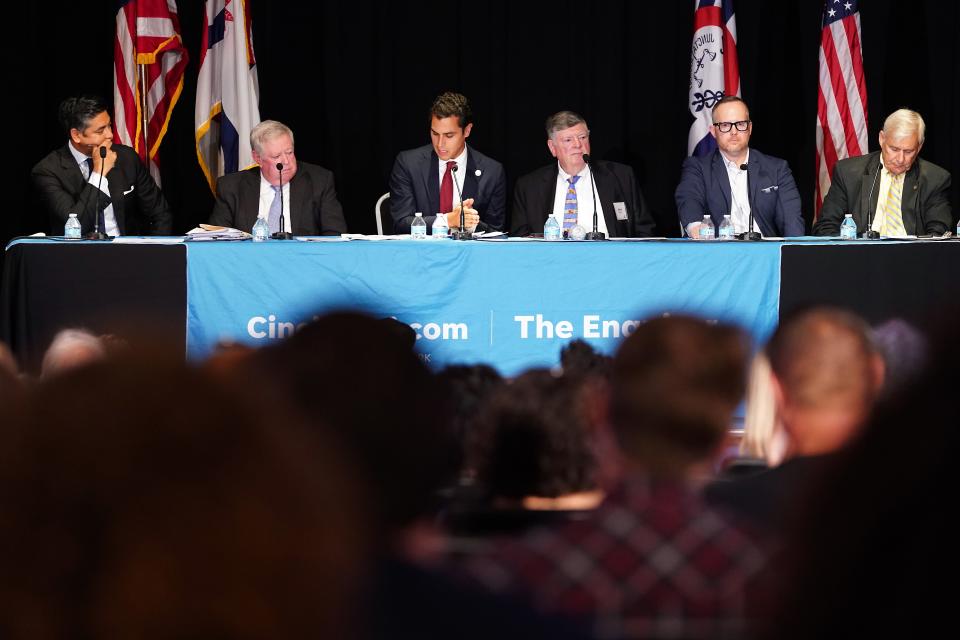Ohio's Issue 1 can be made to sound simple. But there's nothing simple about abortion.

- Oops!Something went wrong.Please try again later.
Ohio’s Issue 1 before voters Nov. 7 on whether to amend the state constitution to ensure abortion access can be made to sound simple.
If you are "pro-choice," vote yes. If you are "pro-life," vote no.
If you believe that life begins at conception and that, therefore, any abortion is wrong, you vote no. If you believe that decision should always be made in medical privacy by the woman and her physician, you vote yes.
There’s nothing simple about it, of course. That’s why there have been legal challenges all the way to the U.S. Supreme Court, which last year overturned the 1973 Roe v. Wade decision that generally protected abortion rights.
The thoughts on abortion of someone who has spent decades working with pregnant mothers and delivering their babies show the complexity.
This southwest Ohio medical professional − name withheld because of the topic sensitivity − says she stopped counting a while ago, but estimates she has delivered at least 3,000 babies. That should be the goal of any pregnancy, she believes: to deliver healthy babies into the world.
"I personally see every day the life that is present," she says. She considers herself at heart a "right-to-life supporter," and doesn’t believe that pregnancies should be terminated because it’s not a good time for the mother to have a child or for "just not wanting to be pregnant."
However, while she doesn’t perform abortions herself, she recognizes medical needs for them.
"There are circumstances when termination of pregnancy to save a mother’s life is a choice that is understandable. If a baby has no chance of survival after birth, I agree with parents’ right to end the pregnancy."
The goal of our discussion was to provide a window to real-world situations, not take a position on current or proposed laws.
Some examples of abnormal fetuses that she’s familiar with are those with Trisomy 13 or Trisomy 18, which are severe genetic disorders that leave little chance of survival to birth or past infancy. Another is anencephaly, a neural tube defect that occurs early in pregnancy and results in the absence of a major portion of the brain and skull. That will cause the infant to either be stillborn or die within hours or days of birth.
Examples of terminating pregnancy to protect the mother’s life that arise, she said, include when the woman has aggressive cancer that requires chemotherapy, or is facing failure of organs such as lungs, kidneys, liver or heart.
However, abortion laws tend not to be specific.
Current Ohio law, which is on hold pending state Supreme Court action, bans abortion after embryonic cardiac activity is detected, usually around six weeks, with little room for exceptions afterward.
During the time that Ohio law was in effect last year before a judge intervened, a 10-year-old Ohio rape victim went to Indiana for an abortion in a nationally highlighted case because the law didn’t except rape or incest. And as The Enquirer’s Jessie Balmert reported, some doctors were afraid of granting medical exceptions for abortions because they feared being charged criminally or losing their licenses.
The proposed amendment would increase the period for abortions to when a fetus would be able to live outside the womb, usually considered to be at around 24 weeks − with exceptions to protect the mother’s life or health.
Defining "health" conditions that call for abortion would be left to medical judgment. Opponents of the amendment say that leaves broad leeway for physicians to interpret and could allow abortions "up to the moment of birth." Such an abortion would be extremely rare, and the latest federal statistics available show that nationally, only 1% of abortions occur after the time of viability.
Other exaggerations by opponents include claiming the amendment would allow secret gender surgery for minors − there’s nothing in the amendment about transgenders. On the national level, former President Donald Trump says Democrats can "kill the baby after birth," while former Vice President Mike Pence says fetuses feel pain at 15 weeks, an assertion unsupported by any medical research.
Polls have consistently pointed to passage of Issue 1, which would continue a string of state (including Kentucky) electoral backing for abortion access over the past year. But that won’t be the last word. Legislation from the Republican-controlled Statehouse and litigation from abortion opponents is likely.
Abortion is a tough issue, but I’d rather leave it to medical professionals to make the decisions than to politicians.
EXTRA POINTS
Get the COVID Vaccine Jab

Speaking of politicizing health, statistician/elections expert Nate Silver this week published an analysis showing that COVID death rates are predictable by state partisanship. Red states’ death rates tend to run higher than blue states’, even when adjusted for the population’s age, Silver wrote, "almost certainly as a result of lower vaccine uptake among Republicans."
It’s not completely clear why that is, but political bombast and misinformation have played a role.
It’s sad that the Kennedy name has become linked to anti-vaccine misinformation. While no one can blame Robert F. Kennedy, who lost both his uncle, the president, and his father, the potential president, to assassins’ bullets, for being conspiracy-minded, his anti-vaccine allegations that predate the coronavirus aren’t in the best interest of national health. The Democratic presidential candidate is reportedly planning to run as an independent.
Meanwhile, consider getting vaccinated. I know people under 65 don’t think they need to, but every few days, I hear from a younger friend that he or she has tested positive. So, it’s out there and contagious.
The Enquirer's Terry DeMio recently reported what local doctor's are recommending.
I got the variant booster, my fifth COVID vaccination, a few days ago. Just a jab, didn’t hurt a bit. And so far, they’ve all worked in keeping me healthy.
Learn More on The Railway, Meet Candidates

By the time you read this, The Enquirer will have hosted a town hall forum on the proposed Cincinnati railway sale on the Nov. 7 ballot. You can find details of how it unfolded on cincinnati.com .
Panelists both for and against the city-planned $1.6 billion sale of the 143-year-old freight railway to Norfolk Southern took part. Supporters led by Mayor Aftab Pureval say sale proceeds will create a trust fund generating investment dollars for infrastructure needs that will double or more the current $25 million lease. Foes say it’s short-sighted to give up such a long-time asset and are skeptical about how the sale funds will be used in the future.
The Enquirer is also hosting an informal "meet the candidates" night Oct. 11. Contenders for Cincinnati City Council and school board and representatives of the ballot issues have been invited.
It’s meant to be mix-and-mingle, no speeches. From 5:30 p.m. to 8 p.m. at Esoteric Brewing Company, 918 East McMillan Street in Walnut Hills.
Dan Sewell is a regular Opinion contributor. Contact him at his personal email: dsewellrojos@gmail.com.
This article originally appeared on Cincinnati Enquirer: Even if Ohio Issue 1 passes, it won't be the last word on abortion

